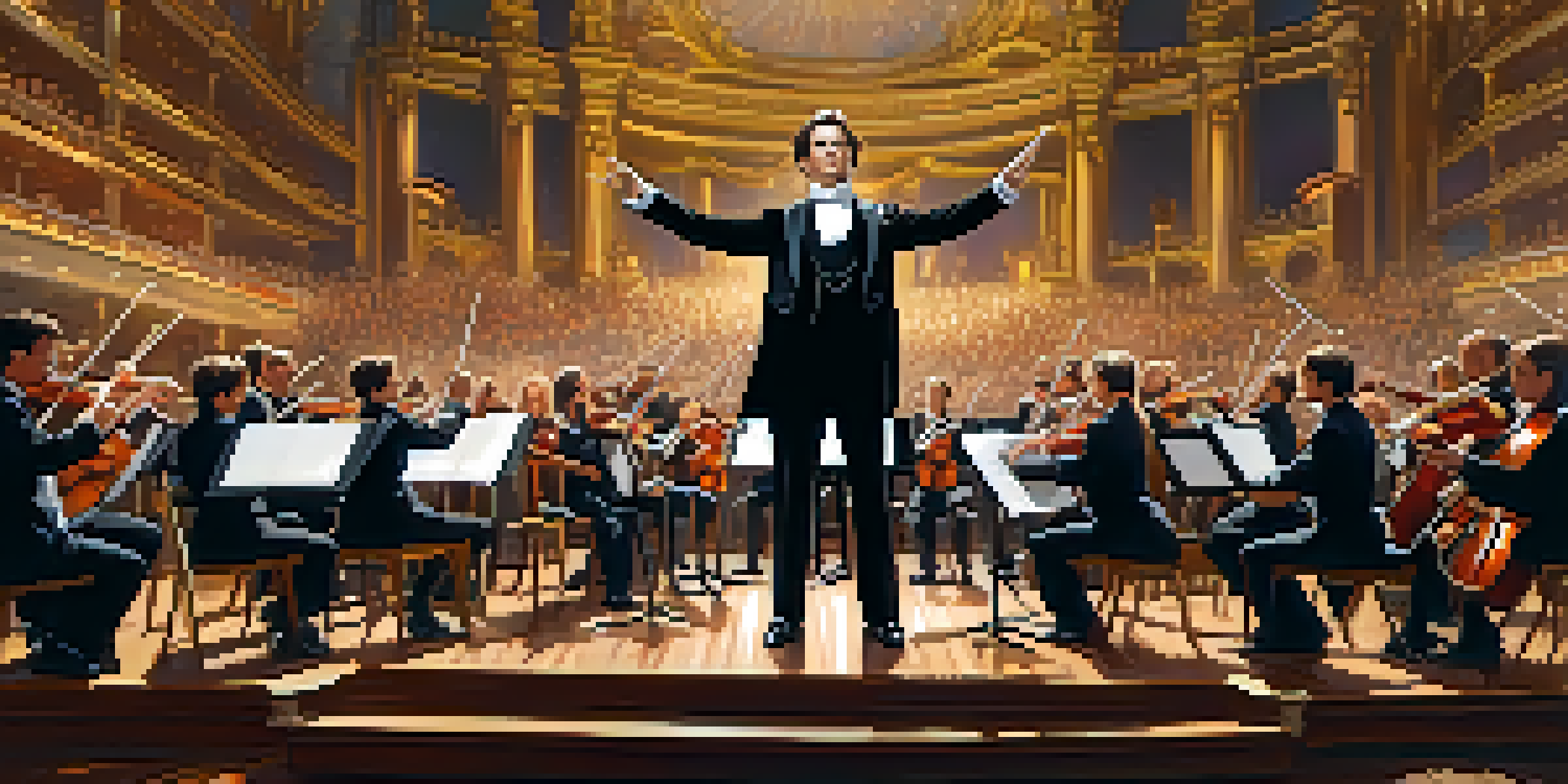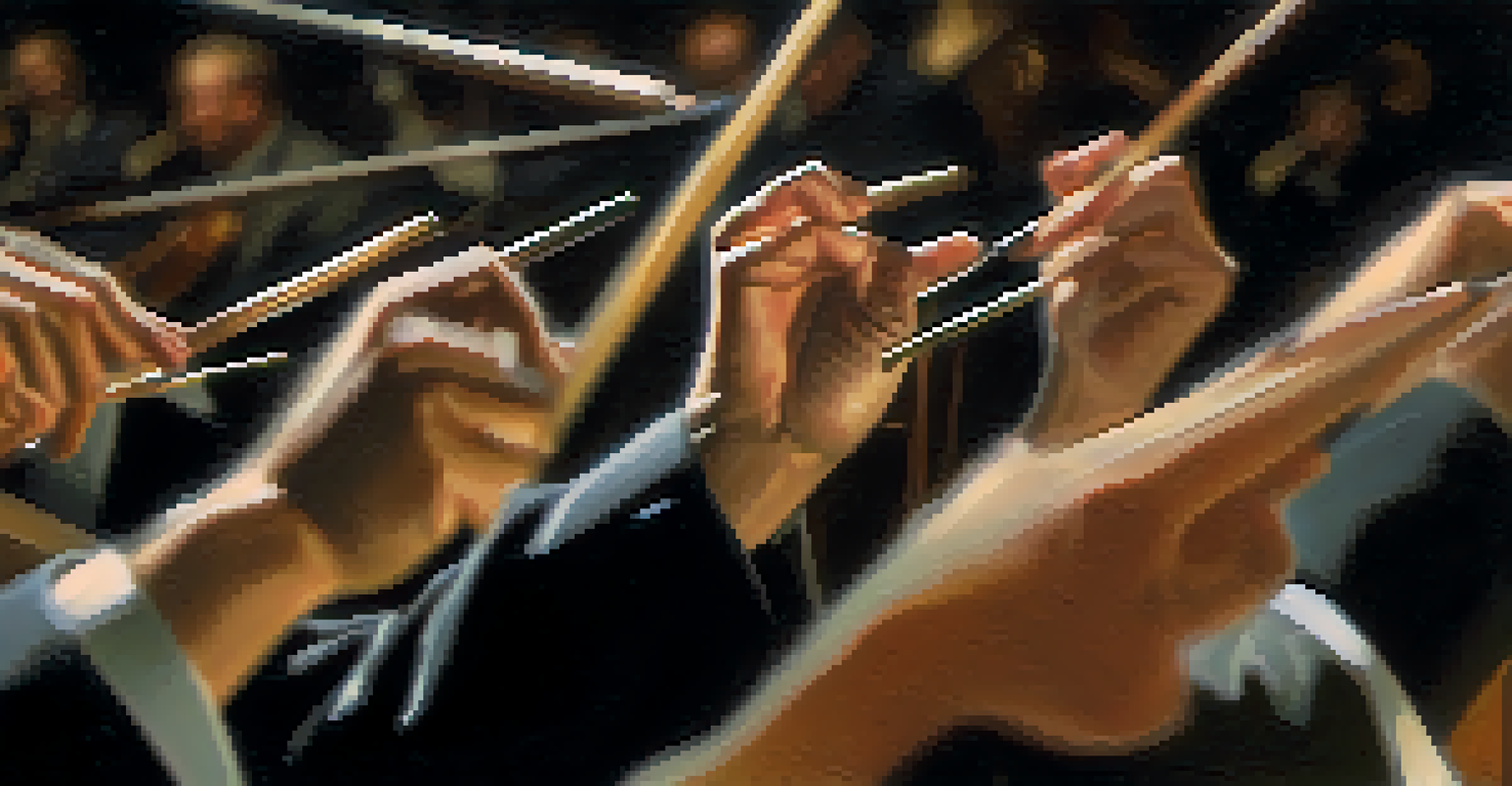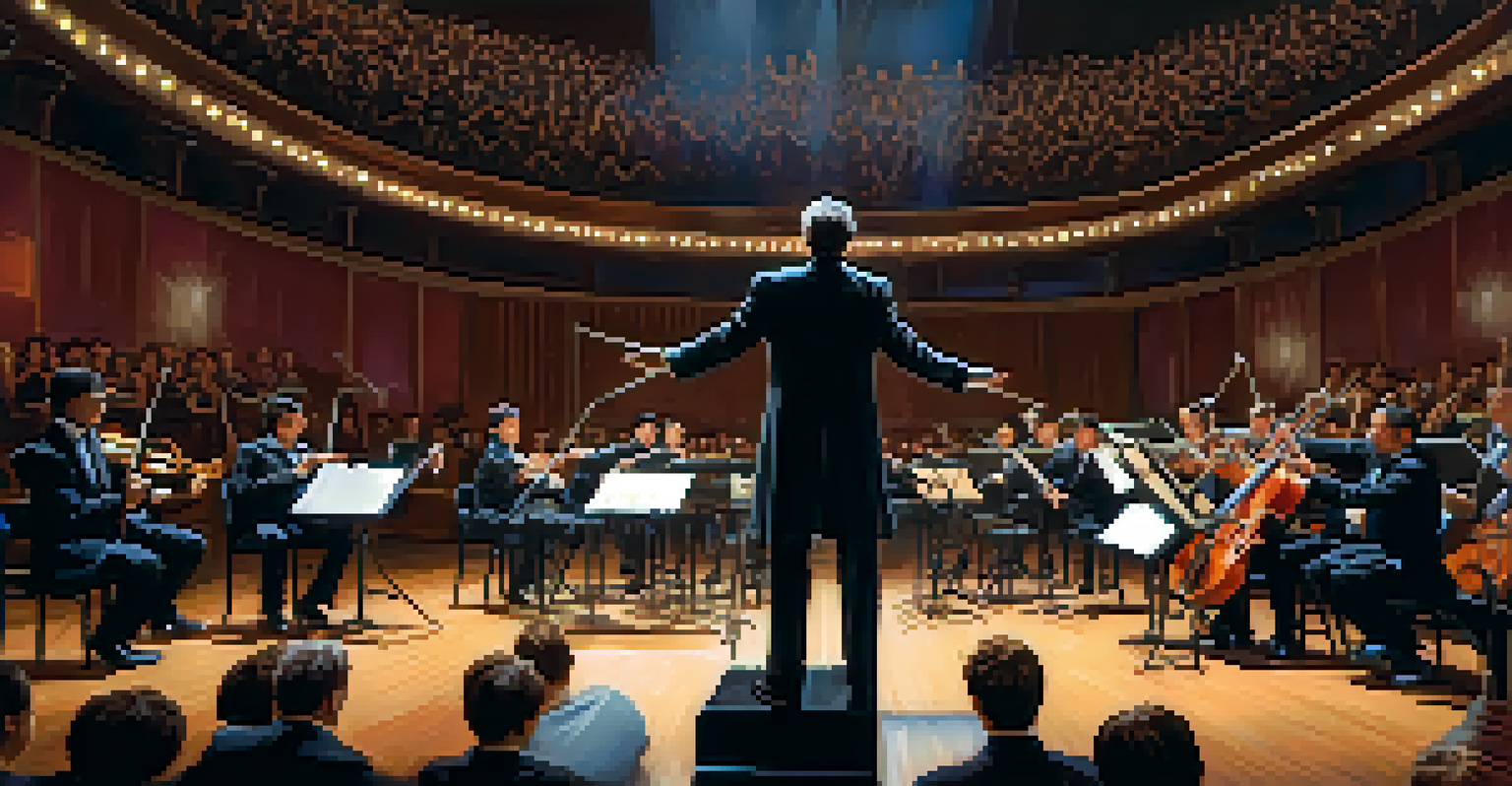The Basics of Conducting: Notation for Conductors and Ensembles

Understanding Conducting: A Brief Overview
Conducting is an art that combines leadership, communication, and musicality. It involves guiding musicians through a performance, ensuring they stay in sync and interpret the score as intended. A conductor's role is not just to keep time, but to inspire the ensemble and bring the music to life.
The conductor's role is not just to keep time, but to inspire the ensemble and bring the music to life.
At its core, conducting is about interpretation and connection. Conductors interpret the music's emotional depth and communicate that vision to their musicians. The gestures used in conducting, from simple hand movements to complex body language, serve as a bridge between the conductor and the ensemble.
Understanding the basics of conducting notation is crucial for any aspiring conductor. Mastering both musical scores and the physical gestures of conducting will enhance your ability to lead and engage with your ensemble effectively.
The Importance of Musical Notation for Conductors
Musical notation is the written language of music, providing essential instructions for performers. Conductors must read and interpret this notation accurately to convey the intended sound and style of the piece. Familiarity with various notational systems helps conductors communicate more effectively with their ensemble.

Different genres and styles of music have unique notational conventions, from classical scores to jazz charts. Understanding these conventions allows conductors to adapt their approach depending on the ensemble they're leading. This flexibility is key to a conductor's success, as it fosters a collaborative environment.
Conducting Combines Leadership and Art
Conducting is not just about timekeeping; it's about leading musicians through a shared emotional journey.
Moreover, a conductor's ability to read and understand notation inspires confidence in the musicians. When the ensemble sees their conductor navigating the score with ease, it enhances their trust and encourages a more cohesive performance.
Basic Elements of Conducting Notation
Conducting notation includes several key elements, such as time signatures, dynamics, and articulations. Time signatures indicate how many beats are in each measure, guiding the conductor in establishing the rhythm. Dynamics, represented by symbols like 'p' for piano (soft) and 'f' for forte (loud), help convey the intended volume of a passage.
To be a conductor means to be a communicator, a person who translates the written score into a living sound.
Articulations, such as staccato (short and detached) or legato (smooth and connected), provide additional nuance to the music. Conductors must be able to communicate these elements through their gestures, ensuring the ensemble understands how to interpret the score. This interplay between notation and gesture is crucial for effective conducting.
Additionally, understanding phrasing—how musical ideas are grouped and expressed—allows conductors to shape the performance's overall character. By recognizing these basic elements, conductors can lead their ensembles with clarity and intention.
Time Signatures: The Foundation of Rhythm
Time signatures are fundamental in determining the rhythmic structure of a piece. They are notated as a fraction, with the top number indicating how many beats are in each measure, and the bottom number specifying the note value that receives one beat. For instance, a 4/4 time signature indicates four beats per measure, with the quarter note getting one beat.
Understanding how to conduct different time signatures is essential for guiding musicians accurately. Conductors use specific patterns to indicate the beat, such as a downward motion for the first beat, followed by lateral motions for subsequent beats. This creates a visual cue that helps musicians stay together.
Musical Notation is Essential
A conductor's ability to read and interpret musical notation is crucial for effective communication with their ensemble.
Moreover, varying time signatures can change a piece's feel and energy. Conductors must be adaptable, using their gestures to convey the appropriate character and flow, whether leading a lively 6/8 piece or a more subdued 3/4 waltz.
Dynamics: Communicating Volume and Emotion
Dynamics play a crucial role in shaping a musical performance, influencing how the music is perceived. Conductors must convey the nuances of dynamics through their gestures, signaling when to play softly or loudly. This is essential for creating contrast and emotional depth within the music.
Using a variety of hand movements, such as widening gestures for louder passages or more contained motions for softer ones, helps musicians interpret these dynamic changes. Additionally, conducting with the body—leaning in for a crescendo or retreating for a decrescendo—enhances the overall communication of dynamics.
By mastering dynamic indications, conductors can elevate their ensemble's performance, ensuring that the emotional intent of the music resonates powerfully with the audience.
Articulations: Nuances that Bring Music to Life
Articulations are essential for expressing how notes should be played, adding character to the music. These can include techniques such as staccato, legato, accents, and more. Conductors must understand these concepts to effectively communicate how musicians should interpret each passage.
To express articulations, conductors use specific gestures that correspond with the desired effect. For example, a sharp, quick motion can indicate staccato, while a smooth, flowing gesture suggests legato. This visual feedback is vital for ensuring that musicians grasp the intended sound.
Dynamics and Phrasing Shape Performance
Understanding dynamics and phrasing allows conductors to enhance emotional depth and create a compelling musical narrative.
Ultimately, articulations contribute to the overall texture and flavor of a performance. A conductor who skillfully conveys these nuances will create a more engaging and dynamic musical experience for both the ensemble and the audience.
Phrasing: Shaping the Musical Narrative
Phrasing refers to how musical ideas are grouped and expressed throughout a piece. Conductors play a pivotal role in shaping these phrases, guiding musicians to emphasize important moments and create a sense of flow. By recognizing the natural contours of the music, conductors can inspire a more expressive performance.
Using gestures that reflect the rise and fall of musical phrases helps musicians understand how to shape their playing. For example, a sweeping upward motion can indicate a climactic point, while a gentle downward gesture may signal a resolution. This encourages a more cohesive interpretation of the score.

Additionally, effective phrasing can enhance the emotional impact of a performance. Conductors who emphasize the nuances of phrasing help their ensemble connect with the music on a deeper level, resulting in a more compelling experience for the audience.